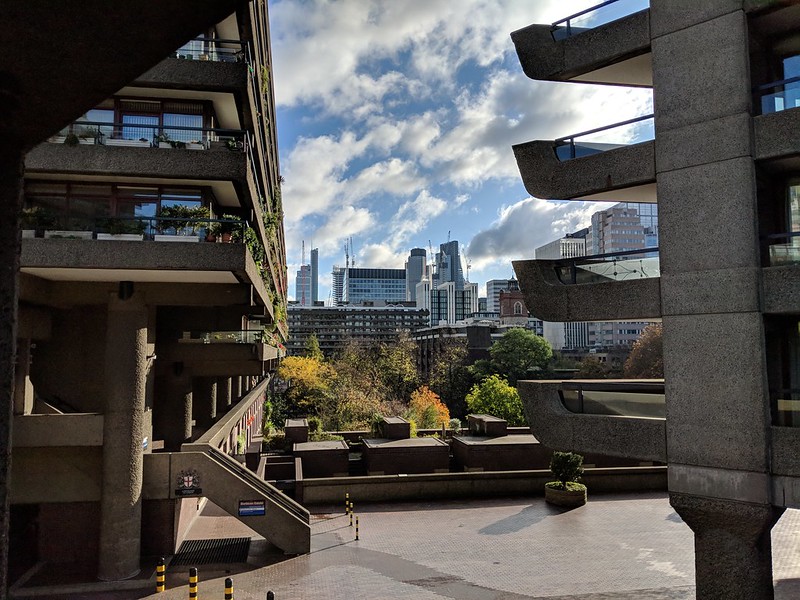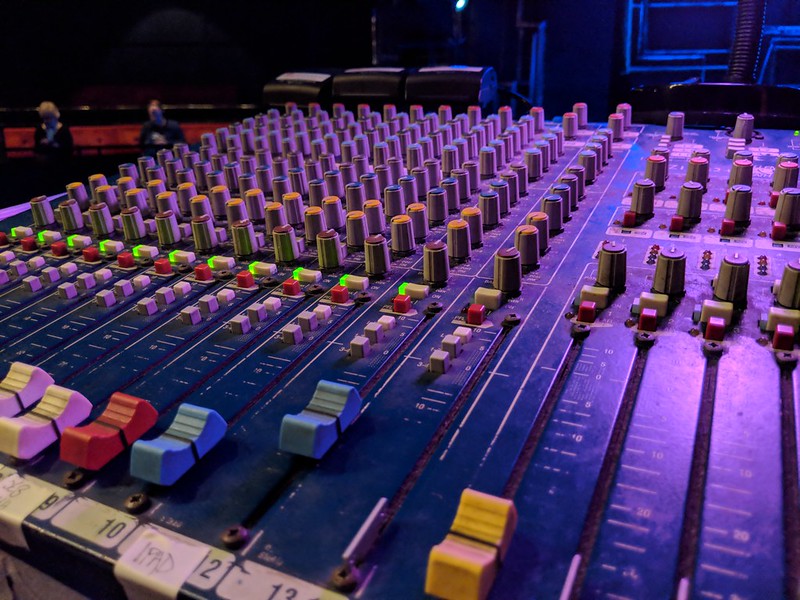Note: I’m calling this a review, but frankly, it’s still early days, and there’ll be lots of things that come out in the wash further down the line. So think of these more as some initial thoughts. Not that any of this stuff prevents other sites posting reviews after less than a week’s worth of use.
I’ve now had this phone well over a month.
As my recent post about the pains of upgrading an Android phone made clear, I’ve recently bought a new phone. The Google Pixel 2.
When Google first started making* their own hardware, they concentrated on both providing a pure Android experience at an affordable price. I have previously owned a Nexus 5 and no fewer than three Nexus 7s. But the Nexus line has sadly long gone, and Google these days is about producing premium devices to show off what they can do.
So what about the Pixel 2?
Well let’s get the first issue out of the way. There is no headphone socket. That’s still a particularly user-hostile thing to do. I use my phone nearly all the time with a pair of headphones. And while I’ve used a variety of wireless headphones over time, they all need regular recharging and invariably you find yourself losing audio when you’re out and about. I actually tend to carry a spare pair of wired headphones just in case. In any event, I’m still enjoying the HTC Hi-Res Earphones that came with my previous HTC 10.
It’s true that the Pixel 2 ships with a headphone dongle, that has a nice snug fit to plug existing headphones into. But this only seems to come in white. I chose a black Pixel 2, and use black headphones. The dongle is white. Which means that after a few weeks sitting in coat, jacket and trouser pockets, it becomes more of a pale grey. I’ve already had to clean mine with an alcohol wipe a couple of times.
The dongle is also quite large. There’s a sizeable bump emerging from the USB-C socket that it plugs into, and it necessarily needs a solid female 3.5mm jack adapter. Combined, these mean that you have unruly lumps and bumps coming out of the phone which can get caught on things when you slide the device into your pocket. Some wired headphones come with 90 degree connectors to allow them to plug in flush to the phone. That’s going to make no difference here. Indeed those headphones are likely to make things worse creating an awkward L-shaped thing to place in your pocket.
The audio quality is excellent, although I don’t think it’s quite as good as my HTC 10 was. Google has dropped the price of these USB-C/Headphone jack dongles from £20 at launch to £9 now (matching Apple’s price for its equivalent Lightning/Headphone Jack dongle), and I’ve already bought a couple of spares because I know these will need them. One of these has already found its way into my cable-case.**
The Bluetooth functionality itself looks good, being Bluetooth 5.0+ LE, although I’ve not fully explored the Bluetooth range. My Beyerdynamic Byron BT headphones seem to work reasonably well, although they do sometimes connect slowly (as they also did with my HTC 10). On the other hand, my Sony MDR-1ABT headphones connect flawlessly, and because both phone and headphones support LDAC, they sound great.
I’ve also recently started using a pair of wireless Zolo Liberty+ Bluetooth headphones. They similarly connect flawlessly, and since both the phone and the headphones use BT 5.0, the connection is stronger than previous small Bluetooth headphones I’ve tried.
Interestingly, I am running into some issues with my Roberts ECO4BT DAB radio that acts as my kitchen radio at home. This is a nice sounding workhorse radio with Bluetooth connectivity, that I never had any problem with connecting to with my previous phone. I still haven’t bottomed out the issue in this instance, since re-pairing the phone will work once. I wonder if the phone is trying to pass audio in a codec that the radio won’t accept as it gets trapped in a reboot/reconnect sequence. I had no other Bluetooth issues, pairing the phone with various headphones and Garmin devices, a Google Home Mini and an Amazon Echo. It also works nicely with my long-in-the-tooth Sony Smartwatch 3.
I really bought this phone because it has the best camera on any smartphone, and I can completely believe that. With 12.2 MP rear camera (the front camera is mostly irrelevant to me), with an F1.8 lens, and capable of shooting 4K video at 30 fps, or slowing down motion to 240 fps (in 720p), this camera ticks many boxes. It uses a combination of optical and electronic image stabilisation, all of which leads to very good imagery coming out of the phone.
The default camera app seems straightforward, without much in the way of bells and whistles. There’s a portrait mode which does all sorts of algorithmic fakery to create bokeh (aka blurriness beyond the subject) that a wide open lens on a camera with a larger sensor would do naturally. The overall thinness of phones, alongside the size of the image sensors and, well, physics, mean that you have to cheat if you want to replicate the effects that larger cameras can create. But the F1.8 lens does mean that it works well in low light.
As important for me is the ability to shoot RAW photos. The default app doesn’t do that, but third party apps do allow it – Lightroom CC Mobile in my case.
There’s also an astonishing smartburst mode that shoots around 10 frames a second continuously. All those shots become available, but software will try to identify the best based on things like people smiling and having their eyes open. I think I only noticed a tiny delay in buffering when I reached 124 shots! And that was only fractional. Fantastic for catching fast moving action.
One small thing I noticed was that if you shoot a short burst of photos, then you can turn them into an animated GIF or video fairly easily. But if you shoot a long series of photos, the app decides that you can’t turn that into a longer GIF or video which is a bit annoying.
However, each regular photo you shoot also comes as a Motion Photo if desired, and you can turn that into a short video as well.
The camera also has a super slowmo mode allowing you to take high speed footage at either 120fps (1080p resolution) or 240fps (720p resolution).
(NB. The above example was shot in very poor lighting conditions, so does not show off the imagery to the best extent.)
The Augmented Reality (AR) Stickers are silly but, kind of fun too.

“These are not the commuters you’re looking for…”
The phone runs very smoothly with a healthy 4GB of RAM paired with a Qualcomm Snapdragon 835 processor. The OLED screen is beautiful, and the resolution means that someone with as many apps as I like to have, can get them into folders across a couple of screens, along with a few choice widgets (mainly weather related). With my HTC 10, the bigger font size meant a limited number of folders could be displayed at any given time, which I found frustrating, as it meant pages and pages of apps. But in fact, the default Android app drawer makes access pretty fast. And apps seem to install very fast indeed.
The full Android Assistant is built into the Pixel 2, and it can be launched in a number of ways. Voice is probably the easiest, or long holding on the home button – which isn’t actually a button. But you can also squeeze the phone in the lower part of it, and it’ll launch. Entertainingly, when I asked the assistant in the Google Store concession in Curry’s PC World on Warren Street (essentially Google’s flagship store in London), they struggled to get it to work. But it does seem to work fine. Whether it’s actually useful is a moot point. In any case, you can set the Google Assistant to launch from any screen including the lock screen. It can also be summoned by a double press of a standard wired headset’s multi-function button.
The fingerprint reader is excellent, and positioned on the back, is much better placed than phones that place them on the home button. It just makes one-handed unlocking very easy indeed. It must have taken me less than 10 seconds to register each finger that I wanted to register. It’s worth going into Settings > System > Languages, input & gestures to turn on Swipe fingerprint for notifications. It’s a quick way to get access to your notifications drawer, and I wouldn’t have found out about it had someone else not pointed it out. It makes it astonishingly handy for one handed use.
It’s also worth noting that double tapping the power button can be set to launch the camera. And if you have multiple camera apps, you can choose which launches.
When I first got the phone, one curious thing I came across was the way the phone seemed to handle WiFi networks that require some further signing in before you have full internet access. I think we’ve all had issues where we’ve taught our phones to use something like BT Openzone or The Cloud, with our phones latching onto the network, only to lose all connectivity until we sign in. It can be very annoying if the phone doesn’t seamlessly login in the background. The default behaviour on my Pixel 2 seems to be to continue to utilise 4G if the WiFi network isn’t offering internet connectivity. This is fine in theory, but can lead to problems when you’re signing into a some networks. My work WiFi network is especially secure, needing both a specific app and a security certificate to access. I found myself turning off mobile data to force the phone to behave properly when signing into such a system. Even opening up the Developer Settings where there’s a switch that should change this behaviour didn’t really work. However, during the course of owning the phone, Google has send out Android 8.1.0, and that seems to have sorted out some of the errant WiFi behaviour.
One thing I hadn’t clocked ahead of time, despite reading reviews, is that the screen is always on, in that it permanently displays that time and date, and depending on your settings, will briefly display notifications. I know other phones do this, but I’ve not had one before. I actually find this very useful. We are just talking about white lettering on a black background that looks otherwise as if the phone is turned off. And importantly, the display does not seem to impact on battery life.
Call quality is good, and it’s nice to discover that the phone alerts you to numbers that it believes are suspected of spam calls (“Were you in an accident…?” “Have you claimed your PPI…”). It’s unclear to me whether this is a Pixel 2 specific thing, or an Android O thing.
I bought the 128 GB model because, sadly, there is no Micro SD card slot on this – or any other Google phone. While I’m only really at about 50% full as I type this, once I’d installed all my apps, downloaded some music for offline listening, and got a full range of podcasts sitting on the device, I know that it’ll fill quickly. Podcasts are my “problem”, since as I’ve written before, I subscribe to more than I can listen to, and I don’t have them automatically delete.
So far, battery life has been exceptional, but since I’m only a few weeks in, that is fairly meaningless. The question will be how close to zero the phone is getting in terms of charge in 18 months’ time. Android O does seem to be quite aggressive in killing background apps that are eating power. And once you drop below the default 15% battery level, you can enable battery saving which places red bars at the top and bottom of the screen to alert you to your reduced power status.
The included 18W charger is very fast recharging the phone, although there’s no wireless charging (something that only seemed to be a “thing” when iPhones started offering it. Nobody seemed very interested when my old Sony Xperia had it).
There have been a few smaller issues along the way. The phone has, at times, randomly rebooted itself. This seems to be a known issue. But it has happened a handful of times that I’ve noticed. Google promised a fix. and at time of writing, I can’t say definitively whether the update to 8.1.0 has fixed it, but I’ve not noticed any more reboots.
And I did have an issue with audio via USB-C on one single occasion when my headphones just weren’t registered by the phone and the sound came out of the phone’s speaker instead. I had to reboot to quickly sort it out (fortunately, reboots are really fast).
I do question how strong USB-C sockets are in the longer term for those who listen to a lot of audio. Say what you like about the 3.5mm jack, but it was a solid and robust fit. Once inserted, the jack had little opportunity for movement, whereas the rectangular shape of USB-C sockets feels like it’ll be less stable in the longer term. Time will tell.
Android 8.0 seems to have added lots of little bits and pieces here and there. WiFi can be set to turn on automatically when you’re in a particular area. This is useful when you’ve turned off WiFi for some reason and forget to turn it back on. You can also turn on “Now Playing” which lets the phone silently identify music playing in the background at any time. It’s like Shazam without actually having to open the Shazam app. The song details come up on the lockscreen (Obviously, there are potentially privacy issues with having your microphone “live” pretty much all the time). Many of these features will be available to any phone if and when they get Android 8.0. That in itself is an issue with Android of course, with phone manufacturers and network operators being responsible for pushing out updates. My phone is unlocked and not tied to a contract to avoid these things.
Overall, I’m very satisfied with my purchase. The camera alone makes it worthwhile. The phone isn’t a giant compared to today’s monsters. But that means I can use it one handed, and it will fit in my pocket comfortably. It actually feels very slightly smaller than my previous HTC 10. However, there is no getting away from the fact that losing the headphone socket is a terrible thing.
* They don’t really make phones of course. They outsource them to third parties. In this instance, the Pixel 2 is made by HTC, while the Pixel 2 XL comes from LG. Google recently announced that they were effectively “buying” part of HTC’s smartphone team, so perhaps future devices will all be manufactured by HTC.
** I must write about this at some point.





